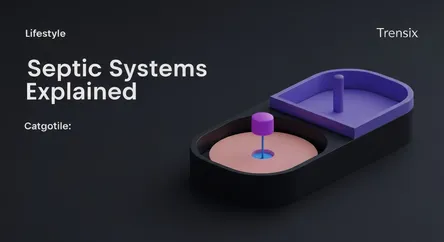Lifestyle
Septic Systems Explained

Discover how septic systems work, why they are vital for rural properties, and what homeowners need to know about their maintenance and impact.
What is it?
A septic system is a self-contained, underground wastewater treatment structure used in areas without centralized sewer systems. Typically, it consists of a septic tank and a drainfield. Wastewater from the home flows into the tank, where solids settle as sludge and lighter materials like grease form a scum layer. The liquid effluent then moves to the drainfield, a series of perforated pipes in a gravel-filled trench, where it is slowly absorbed and filtered by the soil. This natural process treats the water before it returns to the groundwater system.
Why is it trending?
The increasing popularity of rural and suburban living, partly driven by remote work, has brought septic systems into focus for many homebuyers. As people seek properties with more land and autonomy, understanding off-grid utilities is essential. There is also a growing interest in sustainable living; a well-maintained septic system is an effective, eco-friendly way to treat wastewater onsite. This decentralization appeals to those looking for self-sufficient and environmentally conscious housing solutions, making it a key topic in modern real estate.
How does it affect people?
For homeowners, a septic system means direct responsibility for wastewater management. Proper care, including regular tank pumping (every 3-5 years) and being mindful of what goes down the drain, is crucial to prevent costly failures and environmental hazards. In a real estate transaction, a septic system's condition is a major factor. A failed inspection can devalue a property or terminate a sale. Therefore, buyers and sellers must be knowledgeable about the system's age, type, and maintenance history to ensure a smooth and fair transaction.